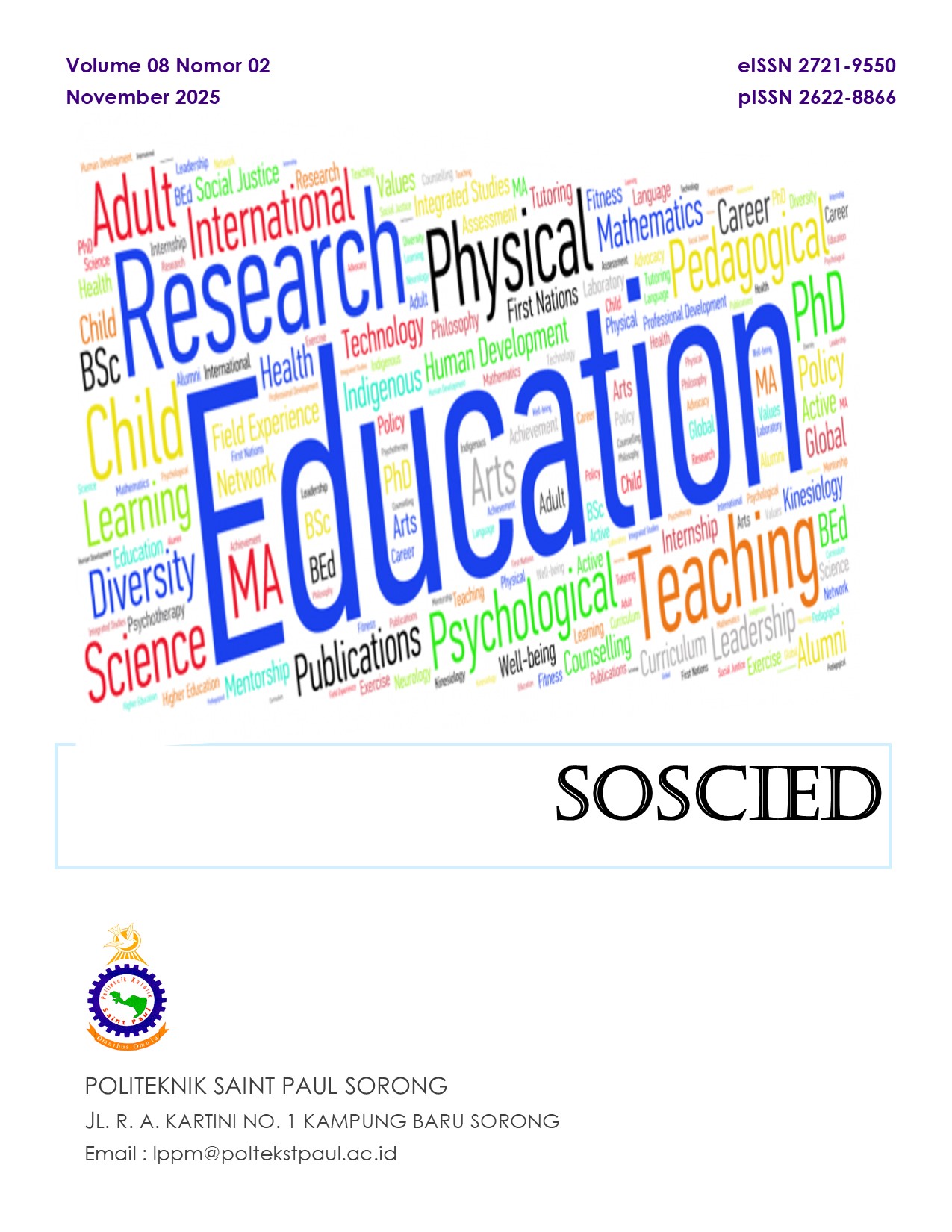PREDIKSI JUMLAH MAHASISWA BARU FMIPA-K UNIMA MENGGUNAKAN MODEL REGRESI NON-LINEAR
Main Article Content
Abstract
This study aims to forecast the number of new students in each study program within the Faculty of Mathematics, Natural Sciences, and Earth Sciences at Manado State University (UNIMA) using a nonlinear regression model, specifically a polynomial model, based on historical enrollment data from the past five years. Accurate forecasting is expected to significantly support more strategic planning in creating a better campus environment and improving the comfort of future prospective students. The data in this study were processed using Microsoft Excel software by developing a third-order polynomial model, selected based on the coefficient of determination (R-squared) as the most suitable fit for the available data. The results indicate that the number of new students in each study program at FMIPA-K UNIMA is projected to increase significantly over the next ten years. This research can serve as a valuable reference for the faculty and study programs to anticipate future enrollment trends.
Article Details
How to Cite
Lengkong, N., Langat, R., Parapaga, E., Tetiwar, G., Tuerah, A., Pangemanan, T., Mangobi, J., & Maukar, M. (1). PREDIKSI JUMLAH MAHASISWA BARU FMIPA-K UNIMA MENGGUNAKAN MODEL REGRESI NON-LINEAR. SOSCIED, 8(2), 434-441. https://doi.org/10.32531/jsoscied.v8i2.970
Section
Articles

This work is licensed under a Creative Commons Attribution-NonCommercial 4.0 International License.
LPPM Politeknik Katolik Saint Paul Sorong
References
Handoko, W. (2019). Prediksi Jumlah Penerimaan Mahasiswa Baru Dengan Metode Single Exponential Smoothing (Studi Kasus: Amik Royal Kisaran). JURTEKSI (Jurnal Teknologi Dan Sistem Informasi), 5(2), 125–132.
Mawardi, L., Alfaruq, U., & Triyono, G. (2024). Prediksi Jumlah Penerimaan Mahasiswa Baru Dengan Metode Linear Regression dan Exponential Smoothing. The Indonesian Journal of Computer Science, 13(1).
Muhadzdzab, H., Asfi, M., & Putri, T. E. (2020). Sistem Prediksi untuk Menentukan Jumlah Pendaftaran Mahasiswa Baru pada Unversitas Catur Insan Cendekia Menggunakan Metode Least Square. Jurnal Informatika Universitas Pamulang, 5(3), 350–355.
Almumtazah, N., Azizah, N., Putri, Y. L., & Novitasari, D. C. R. (2021). Prediksi jumlah mahasiswa baru menggunakan metode regresi linier sederhana. Jurnal Ilmiah Matematika Dan Terapan, 18(1), 31–40.
Novita, D. (2018). Strategi Pengembangan Program Studi Dalam Meningkatkan Perolehan Jumlah Mahasiswa Pada Perguruan Tinggi Swasta. Jurnal Manajemen KINERJA (Ejournal), 4(1), 30–45.
Windari, A., & Murniati, E. (2020). Prediksi Jumlah Calon Mahasiswa Baru Tahun 2018-2022 di Poltekkes Kemenkes Semarang Forecasting the Number of New Students in Poltekkes Kemenkes Semarang in 2018-2022. Jurnal Rekam Medis Dan Informasi Kesehatan, 3(1). Universitas Negeri Manado
Nadia, F.M. (2025). FORECASTING JUMLAH MAHASISWA BARU FMIPAK UNIMA.
Frank R. Giordano, W. P. F. S. B. H. (2013). MATHEMATICAL MODELING.
Eniyati, S., Santi, R. C. N., & Arianto, T. (2020). Penggunaan metode lagrange dalam peramalan jumlah mahasiswa baru.
Mawardi, L., Alfaruq, U., & Triyono, G. (2024). Prediksi Jumlah Penerimaan Mahasiswa Baru Dengan Metode Linear Regression dan Exponential Smoothing. The Indonesian Journal of Computer Science, 13(1).
Muhadzdzab, H., Asfi, M., & Putri, T. E. (2020). Sistem Prediksi untuk Menentukan Jumlah Pendaftaran Mahasiswa Baru pada Unversitas Catur Insan Cendekia Menggunakan Metode Least Square. Jurnal Informatika Universitas Pamulang, 5(3), 350–355.
Almumtazah, N., Azizah, N., Putri, Y. L., & Novitasari, D. C. R. (2021). Prediksi jumlah mahasiswa baru menggunakan metode regresi linier sederhana. Jurnal Ilmiah Matematika Dan Terapan, 18(1), 31–40.
Novita, D. (2018). Strategi Pengembangan Program Studi Dalam Meningkatkan Perolehan Jumlah Mahasiswa Pada Perguruan Tinggi Swasta. Jurnal Manajemen KINERJA (Ejournal), 4(1), 30–45.
Windari, A., & Murniati, E. (2020). Prediksi Jumlah Calon Mahasiswa Baru Tahun 2018-2022 di Poltekkes Kemenkes Semarang Forecasting the Number of New Students in Poltekkes Kemenkes Semarang in 2018-2022. Jurnal Rekam Medis Dan Informasi Kesehatan, 3(1). Universitas Negeri Manado
Nadia, F.M. (2025). FORECASTING JUMLAH MAHASISWA BARU FMIPAK UNIMA.
Frank R. Giordano, W. P. F. S. B. H. (2013). MATHEMATICAL MODELING.
Eniyati, S., Santi, R. C. N., & Arianto, T. (2020). Penggunaan metode lagrange dalam peramalan jumlah mahasiswa baru.

